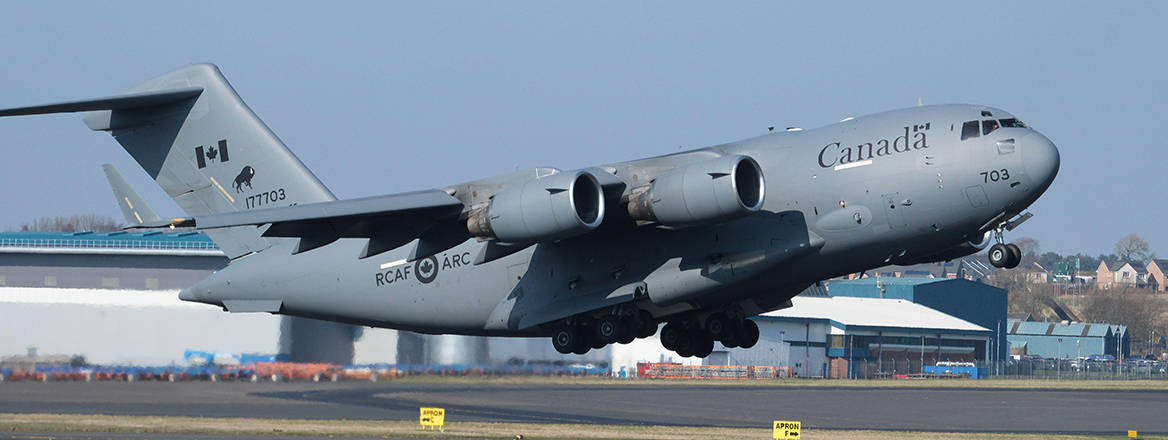Canada will be spending 2% of its gross domestic product on defence within the next fiscal year. This is long overdue. Despite pledging to reach the 2% target in 2014, Canada has avoided making the necessary investments to meet its alliance obligations, but there is now reason to hope that Canada will finally meet them.
As announced by Prime Minister Mark Carney on 9 June 2025, Canada’s defence expenditures are slated to reach CAD 62.7 billion in 2025-2026, which will bring total defence spending to 2% of GDP. The details surrounding how Canada will expand its CAD 40 billion defence budget to CAD 62.7 billion in 2025-26 are hazy at the moment, however. The government has outlined an additional CAD 9 billion in defence spending proper, coupled with an additional defence-related expenditures of CAD 14 billion from other government departments. Details about the CAD 9 billion earmarked for the Department of National Defence (DND) and the Canadian Armed Forces (CAF) are available here. What exactly is included in that CAD14 billion remains difficult to parse, but it is connected with Veterans’ Affairs, the Canadian Coast Guard, and Canada’s foreign signals intelligence agency, the Communications Security Establishment.
Since these figures are imprecise, it is worth examining what Carney’s announcement tells us about his government’s defence aspirations and what challenges lay ahead.
Budget Line Items Signal a Greater Independence
Canada’s new defence spending will address budgetary shortfalls in ongoing projects, such as land vehicles. A number of procurement projects were moving ahead without the funding needed deliver full capability the CAF requires. The need to top up these projects was evident, and it speaks to Canada’s worst defence acquisition tendencies that it has taken so long to address them.
There is also new money for recruitment and retention, and to augment the civilian defence workforce. Carney spoke about his intent to increases military salaries, which will likely form part of the CAD 2.6 billion allocated for recruitment and retention. The fact that more money is going to defence civilians is a promising sign as well, since there were concerns the defence department would shrink precisely at a time when more people are needed to move an expanding capital portfolio.
Thirdly, part of the CAD 9 billion will augment the so-called ‘national procurement’ budget, which funds repairs and maintenance. This budget has been chronically underfunded, affecting the readiness the CAF’s major fleet and related infrastructure. Approximately CAD 500 million, moreover, is going toward ‘digital foundations’ for DND and the CAF. During a technical briefing that followed Carney’s announcement, officials explained that these funds would make the CAF ‘more resilient to cyber threats, keep vital information secure and use data strategically to improve our decision making.’ In addition, they highlighted that this money would also ‘grow the Canadian Armed Forces cyber command, modernize our digital resources and expand our use of artificial intelligence.’
A measured shift away from American military technology is neither the end of the world nor the dawn of a new one for Canada. This is a question of degrees, not binaries
Fifth, there is new money for emerging technologies, with a focus on Canadian suppliers. This is a wise investment, given Canada’s strengths in AI, quantum, and autonomous systems. Coupled with the promise to further invest in the Canadian defence industrial base, these investments in emerging technologies promise a boon for Canada’s defence innovators.
Finally, there most striking the biggest part of Carney’s announcement was the pledge to spend CAD 2 billion to diversify Canada’s defence partnerships and reduce the county’s military dependence on the United States. Since Carney has also signalled an intent to involve Canada in ReArm Europe, the Canadian government will be seeking to build partnerships with, and buy additional capabilities from, European allies. Notably, Canada is hoping to sign a contract for new conventional submarines by 2027. The Carney government’s commitment to acquire more European capabilities may be good news for submarine manufacturers in Germany, France, or Spain.
Boosting Canada's Manufacturing Reputation
Yet Carney’s promise to involve Canada in ReArm Europe and his intent to diversify Canadian military capabilities faces important challenges. Above all, Canada has a poor reputation among European defence manufacturers, owing to Ottawa’s past lack of commitment and transparency, willingness to cancel defence projects with little notice, and propensity to favour American suppliers. Many Europeans companies still view Canada warily, as a result. The Carney government may need to demonstrate that it is serious about building new partnership and acquiring European capabilities before companies on the continent are willing to give Canada another chance.
Canada, it should further be noted, is not disavowing further defence ties with the United States. As the Carney government was careful to highlight, Canada will ‘continue to leverage partnerships with the US when it is in Canada’s best interest to do so.’ This leaves open the door to Canada contributing to various American military endeavours, including President Donald Trump’s Golden Dome, which aims to provide North American with a comprehensive aerospace defence capability against cruise, hypersonic, ballistic missiles, as well as drones and other air- and space-borne threats. The Canada-United States defence relationship is far from over, though it promises to look and feel quite different in the future.
Canada’s future military ties with the United States, in fact, present Carney with his most difficult defence problem to manage. Both ardent defenders of the existing relationship and its strongest critics tend to present the question as an either/or proposition: Canada is either fully aligned with the United States or dramatically pivoting away from the Americans. This framing presents a false dichotomy. Canada can remain a close ally of the United States while diversifying its partnerships and building more sovereign capability. Carney has said that it no longer makes sense for Canada to spend 75 cents of every defence procurement dollar on American capabilities. Yet were Canada to go from spending 75% of its capital expenditures on American capability to spending closer to 60%, it would be hard to argue that Canada is recklessly abandoning its American alliance. A measured shift away from American military technology is neither the end of the world nor the dawn of a new one for Canada. This is a question of degrees, not binaries.
To conclude, it appears that Canada is finally getting serious about defence spending under the premiership of Carney. Since NATO may be poised to set a new target of 3.5% for defence expenditures, however, Canada may find itself falling short once again. We shall see if it takes Canada still another decade to catch up.
© RUSI, 2025.
The views expressed in this Commentary are the author's, and do not represent those of RUSI or any other institution.
For terms of use, see Website Terms and Conditions of Use.
Have an idea for a Commentary you'd like to write for us? Send a short pitch to commentaries@rusi.org and we'll get back to you if it fits into our research interests. View full guidelines for contributors.
WRITTEN BY
Professor Philippe Lagassé
Senior Associate Fellow - Expert in defence policy
- Jim McLeanMedia Relations Manager+44 (0)7917 373 069JimMc@rusi.org




